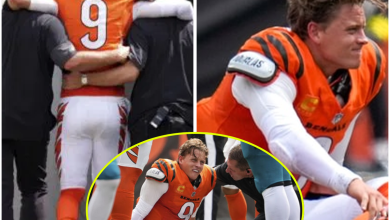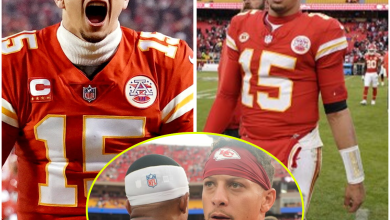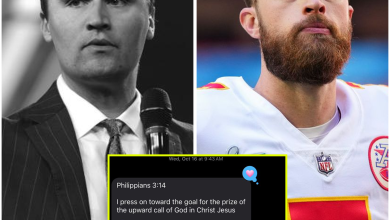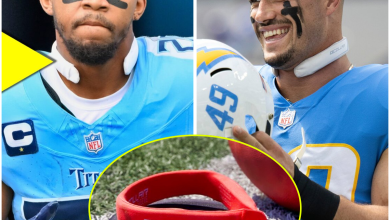An Inevitable Tragedy: The On-Court War and League Failure That Ended Caitlin Clark's Season
The news that every WNBA fan, executive, and sponsor had been dreading has finally arrived: Caitlin Clark’s record-breaking sophomore season is over. The official announcement cites a right groin injury and a subsequent bone bruise, but to those who have been paying attention, the clinical diagnosis tells only a fraction of the story. This was not a freak accident. This was the inevitable, tragic conclusion to a targeted campaign of physical aggression that the WNBA not only allowed to happen but actively profited from, all while its biggest rival, Angel Reese, fanned the flames.
The league was warned. Fans saw it. Pundits debated it. Now, the player who single-handedly lifted women’s basketball into a new stratosphere of relevance is on the sidelines, and the league is left to face the catastrophic fallout of its own making. This is the story of how professional jealousy, corporate greed, and a stunning failure of leadership conspired to break the league’s golden goose.
The First Shot in a Bitter War
To understand how we got here, we have to go back to the 2023 NCAA Women’s Championship. As the final seconds ticked away on LSU’s victory, Angel Reese followed a defeated Caitlin Clark across the court, taunting her with the “you can’t see me” gesture. At the time, it was framed as competitive fire. In hindsight, it was the first shot in a personal vendetta that would follow both players to the pros and transform a healthy rivalry into something dark and destructive.
:max_bytes(150000):strip_icc():focal(826x307:828x309)/angel-reese-liberty-sky5-91225-261f213405564fa4890b861e4c8f3901.jpg)
When Clark was drafted number one and Reese was sent to the rival Chicago Sky, the WNBA saw dollar signs. The league immediately began marketing their matchups as the next great sports rivalry. But behind the marketing slogans, a dangerous on-court narrative was taking hold: the only way to stop Caitlin Clark was not to outplay her, but to physically break her. During her rookie season alone, Clark was the recipient of a staggering 20% of all flagrant fouls called in the entire league, with many of the most egregious coming from the Chicago Sky. These weren't just hard fouls; they were statements, often followed by laughter and celebration from the opposing bench.
A Rivalry Turns Reckless
The league got its first taste of how ugly things could get in a now-infamous game against the Sky. The blow didn’t come from Reese, but from her teammate Chennady Carter, who delivered a shocking blindside hip-check on Clark away from the ball. As officials reviewed the play, cameras caught Angel Reese leaping off the bench, pumping her fists not in concern, but in gleeful celebration. It was a disturbing image that confirmed what many fans already suspected: this wasn't about basketball anymore.
The WNBA’s response was a disgrace. Carter’s foul was initially ruled a common foul, only upgraded to a Flagrant 1 after a public outcry—a meaningless slap on the wrist. The message to the league was clear: you can take cheap shots at our biggest star, and we will do almost nothing to stop it.

Emboldened, Reese soon took matters into her own hands. In their next matchup, she wound up and struck Clark directly in the head as she drove for a layup. Reese later dismissed it as a “basketball play,” but millions saw the replay and knew the truth. The rivalry had officially crossed the line from competitive to dangerous. This wasn't just about tough defense; it was a pattern of abuse. Opponents were hammering Clark on curls, setting illegal screens designed to inflict maximum damage, and bodying her up long before she touched the ball. It was a strategy of a thousand cuts, and her body was beginning to break down under the relentless war of attrition.
A Villain's Monologue Amidst the Chaos
As criticism mounted, Angel Reese didn’t back down; she doubled down. She embraced the villain role, arguing in interviews that her physicality was just as responsible for the WNBA’s growth as Clark’s talent. In a quote that dripped with resentment, she refused to even say Clark’s name, stating, «I'll look back in 20 years and be like, 'Yeah, the reason why we're watching women's basketball is not just because of one person. It's because of me, too.'»
When the news of Clark’s season-ending injury finally broke, Reese had a chance to show grace. She did the opposite. She pivoted to talking about how it was time for the league’s “other stars” to shine. Her comments were seen by millions as shockingly cold and tone-deaf, cementing the narrative that she was more concerned with claiming the spotlight than the well-being of a fellow competitor. This was backed by the deafening silence from the majority of the league’s veteran players, whose lack of public support for Clark was widely interpreted as tacit approval of the brutal welcome she received.
The Bubble Bursts and the Fallout Begins
The consequences of the league’s negligence have been immediate and catastrophic. The “Caitlin Clark effect,” which had propped up the entire league, vanished overnight. As sports commentator Colin Cowherd noted, national shows that once led with Clark segments stopped talking about the WNBA entirely.
The financial damage is staggering. Ticket prices for Fever games plummeted on resale markets. Venues that had moved games to larger NBA arenas to accommodate Clark’s massive draw are now facing a sea of empty seats. Major brands like Nike, Gatorade, and State Farm, which invested millions in deals centered around Clark, are now seeing their campaigns sidelined. The league’s failure to protect Clark wasn’t just a moral failing; it was a financial disaster that exposed just how fragile its newfound success was.

This has also ignited a fan revolt. The hashtag #WNBABoycott trended as infuriated fans vowed to leave seats empty, feeling betrayed by a league they believe sacrificed its most talented player for drama. Their anger was fueled by the WNBA’s poor communication, which dragged out the injury status with «day-to-day» nonsense for weeks, only to confirm the worst.
In the end, this is a story of profound hypocrisy. The WNBA happily sold Clark’s jersey, boasted about her TV ratings, and plastered her face on every promotion. They cashed the checks she brought in but refused to provide the protection her status demanded. Now, the buzz has faded, the ratings are sinking, and the incredible momentum she built has ground to a halt. The league is left in the smoldering ruins of its own short-sightedness, a cautionary tale of what happens when jealousy is allowed to fester and profit is prioritized over players. The biggest question is no longer when Caitlin Clark will return, but if the WNBA can ever recover from betraying the very player who gave it hope.



